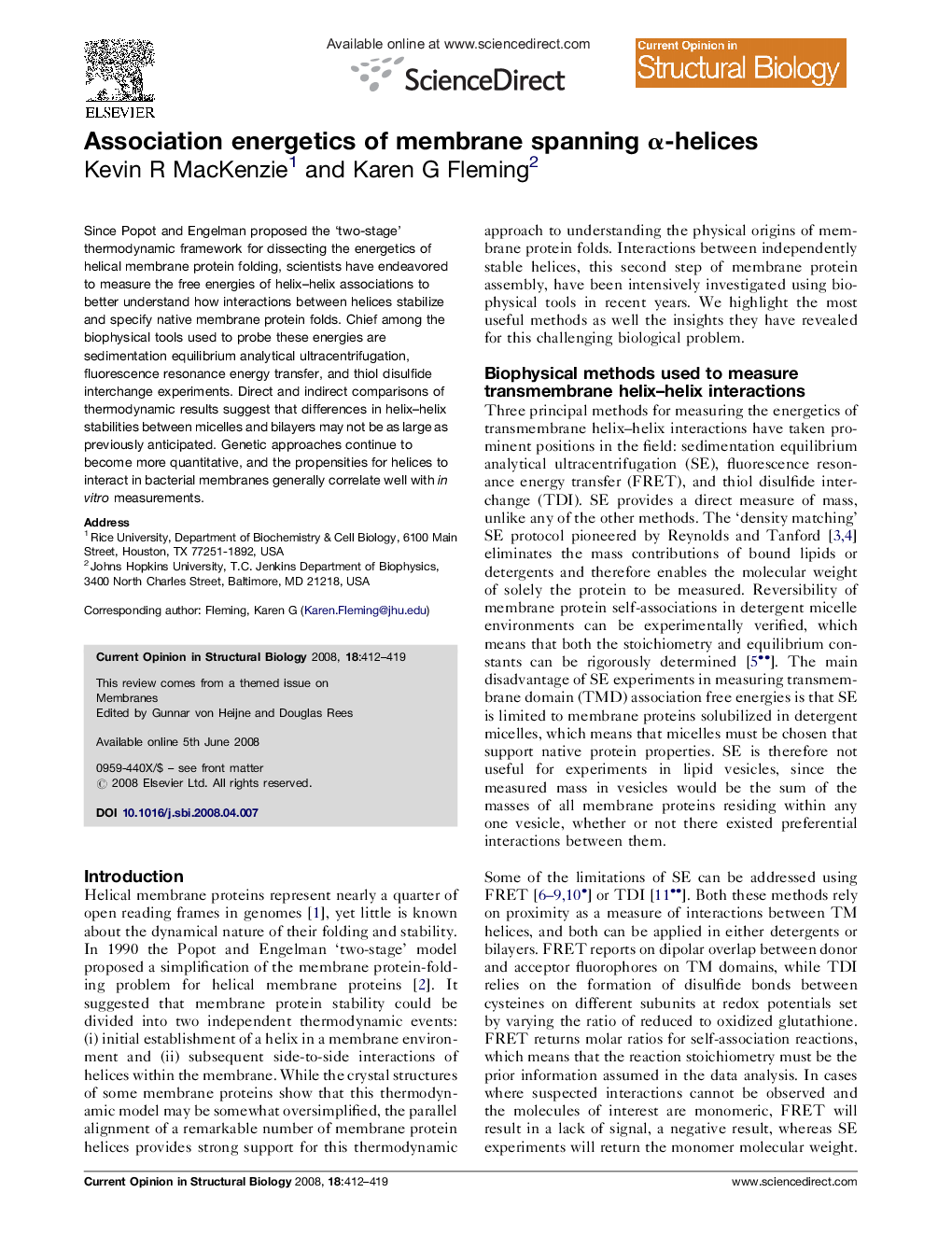| Article ID | Journal | Published Year | Pages | File Type |
|---|---|---|---|---|
| 1979663 | Current Opinion in Structural Biology | 2008 | 8 Pages |
Since Popot and Engelman proposed the ‘two-stage’ thermodynamic framework for dissecting the energetics of helical membrane protein folding, scientists have endeavored to measure the free energies of helix–helix associations to better understand how interactions between helices stabilize and specify native membrane protein folds. Chief among the biophysical tools used to probe these energies are sedimentation equilibrium analytical ultracentrifugation, fluorescence resonance energy transfer, and thiol disulfide interchange experiments. Direct and indirect comparisons of thermodynamic results suggest that differences in helix–helix stabilities between micelles and bilayers may not be as large as previously anticipated. Genetic approaches continue to become more quantitative, and the propensities for helices to interact in bacterial membranes generally correlate well with in vitro measurements.
